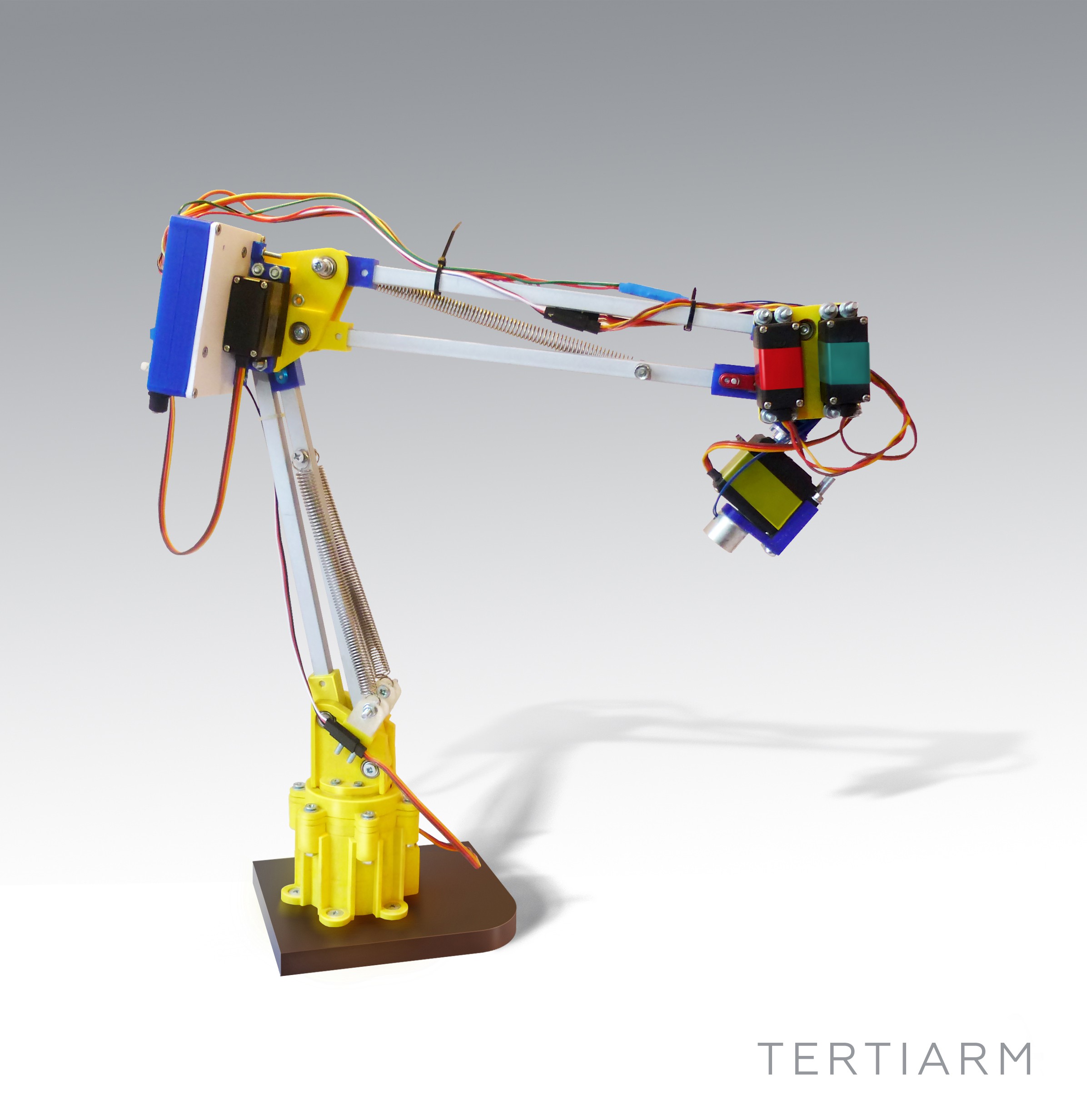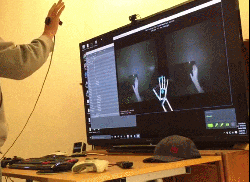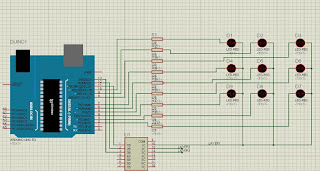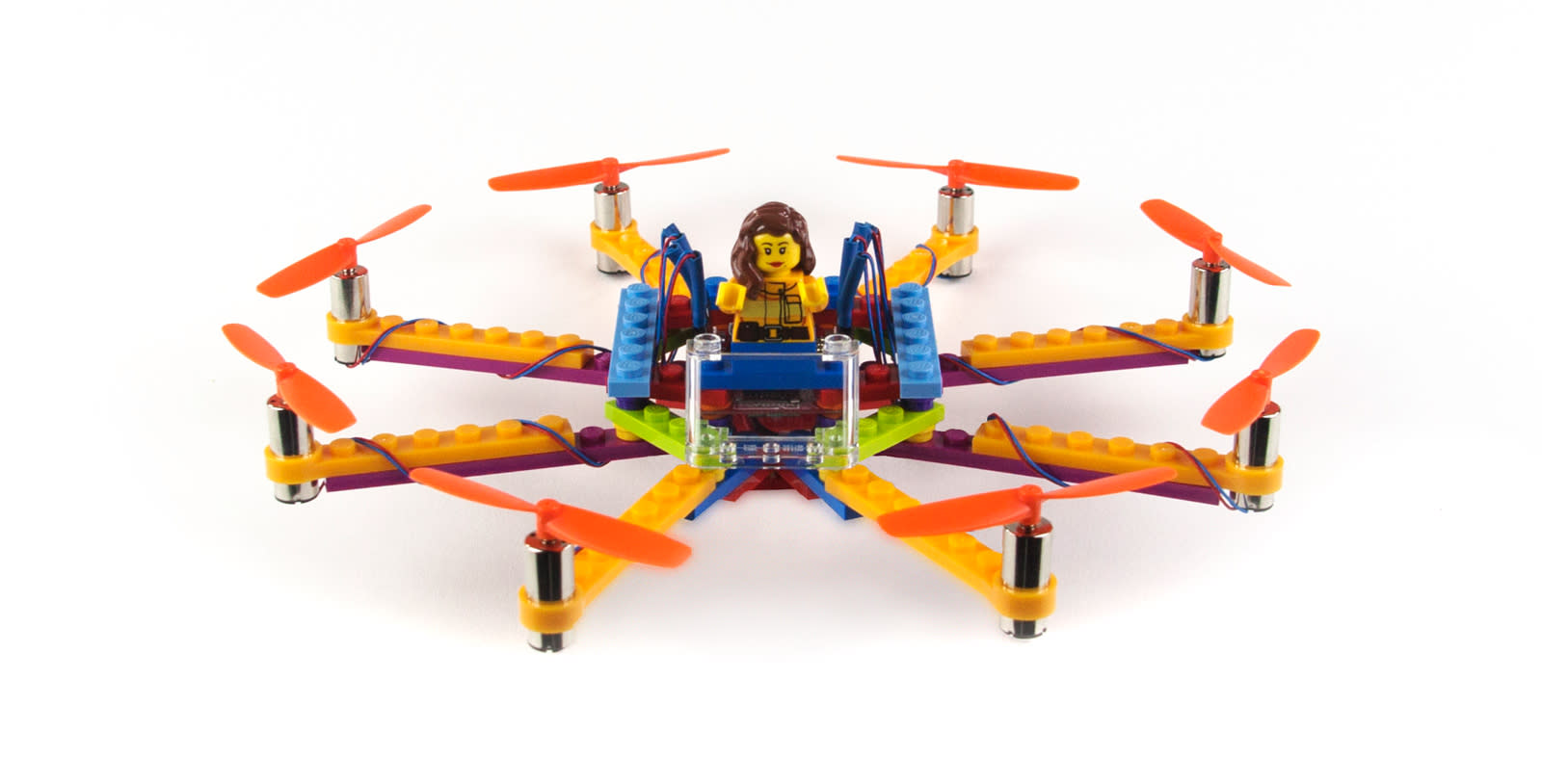Tertiarm - low cost, 3d printed robot arm based on Ikea lamp
What does it do?



 |
| Connection on proteus |
[Florian] has been putting a lot of work into VR controllers that can be used without interfering with a regular mouse + keyboard combination, and his most recent work has opened the door to successfully emulating a Vive VR controller in Steam VR. He uses Arduino-based custom hardware on the hand, a Leap Motion controller, and fuses the data in software.
We’ve seen [Florian]’s work before in successfully combining a Leap Motion with additional hardware sensors. The idea is to compensate for the fact that the Leap Motion sensor is not very good at detecting some types of movement, such as tilting a fist towards or away from yourself — a movement similar to aiming a gun up or down. At the same time, an important goal is for any added hardware to leave fingers and hands free.
 [Florian]’s DIY VR hand controls emulate the HTC Vive controllers in Valve’s Steam VR Tracking with a software chain that works with his custom hardware. His DIY controller doesn’t need to be actively held because by design it grips the hand, leaving fingers free to do other tasks like typing or gesturing.
[Florian]’s DIY VR hand controls emulate the HTC Vive controllers in Valve’s Steam VR Tracking with a software chain that works with his custom hardware. His DIY controller doesn’t need to be actively held because by design it grips the hand, leaving fingers free to do other tasks like typing or gesturing.
Last time we saw [Florian]’s work, development was still heavy and there wasn’t any source code shared, but there’s now a git repository for the project with everything you’d need to join the fun. He adds that “I see a lot of people with Wii nunchucks looking to do this. With a few edits to my FreePIE script, they should be easily be able to enable whatever buttons/orientation data they want.”
We have DIY hardware emulating Vive controllers in software, and we’ve seen interfacing to the Vive’s Lighthouse hardware with DIY electronics. There’s a lot of hacking around going on in this area, and it’s exciting to see what comes next.
 |
| connections |
 |
| Arduino based voltmeter |
 |
| Schematics |

Arduino boards can certainly be used to create homebrew connected devices, but that doesn't mean it's easy. What if you're a rookie who has yet to master programming or wiring? That's where Arduino's new, crowdfunded ESLOV kit might save the day. All you have to do to create a basic Internet of Things device is snap in some plug-and-play modules, connect your creation to your PC and draw connections between those modules in an editor. You only have to dive into serious programming if you have specific needs -- there's ready-made code for common devices like air quality sensors, baby monitors and remote-controlled thermostats.
Source: Kickstarter, Arduino Blog

Arduino boards can certainly be used to create homebrew connected devices, but that doesn't mean it's easy. What if you're a rookie who has yet to master programming or wiring? That's where Arduino's new, crowdfunded ESLOV kit might save the day. All you have to do to create a basic Internet of Things device is snap in some plug-and-play modules, connect your creation to your PC and draw connections between those modules in an editor. You only have to dive into serious programming if you have specific needs -- there's ready-made code for common devices like air quality sensors, baby monitors and remote-controlled thermostats.

Lego bricks have been the foundation of so many awesome and elaborate creations, it's no wonder people have already had the idea to send them skyward in drone form. But while there are plenty of DIY tutorials around, as well as the odd prebuilt model, we haven't seen anything quite as accessible and affordable as these new Lego UAV kits from Flybrix.